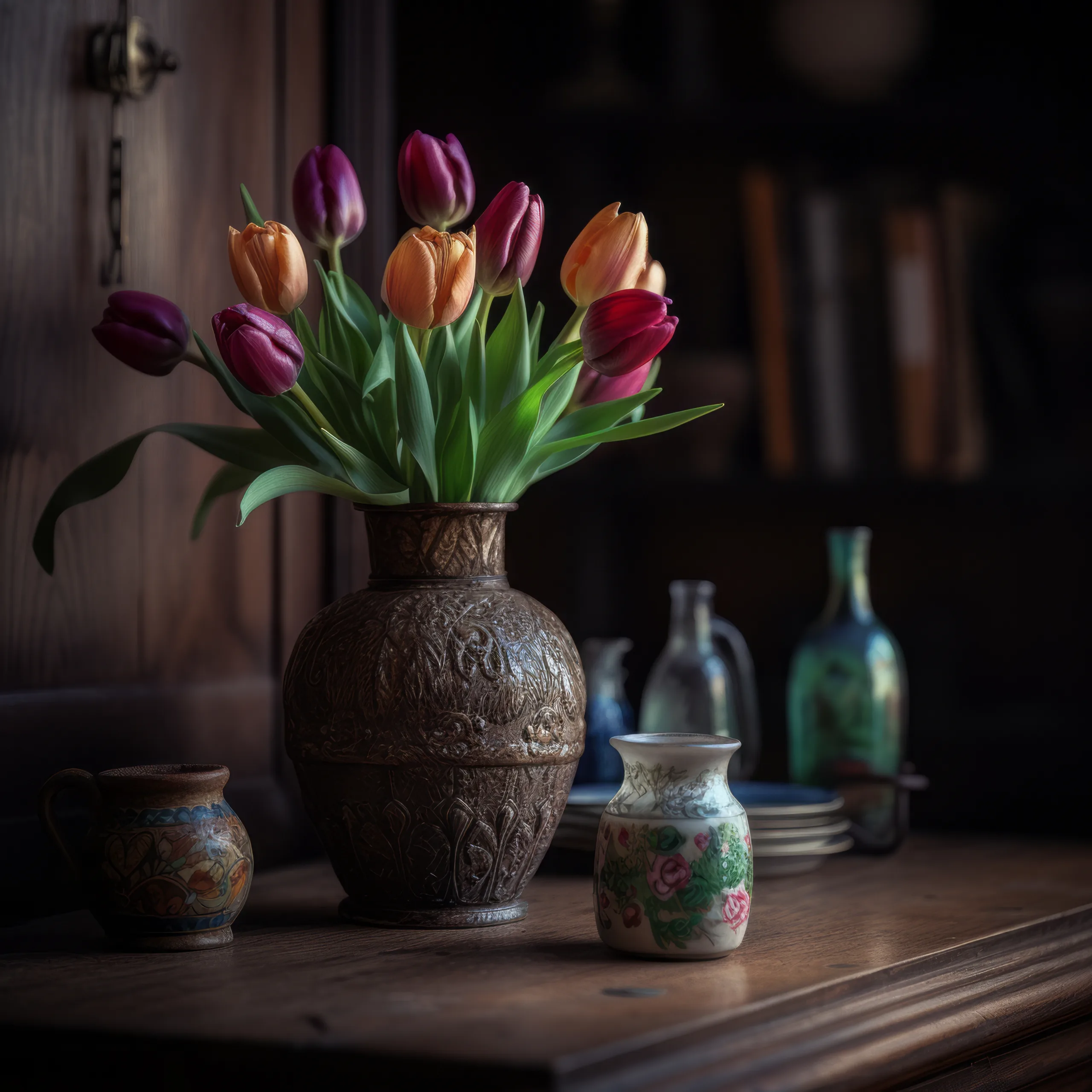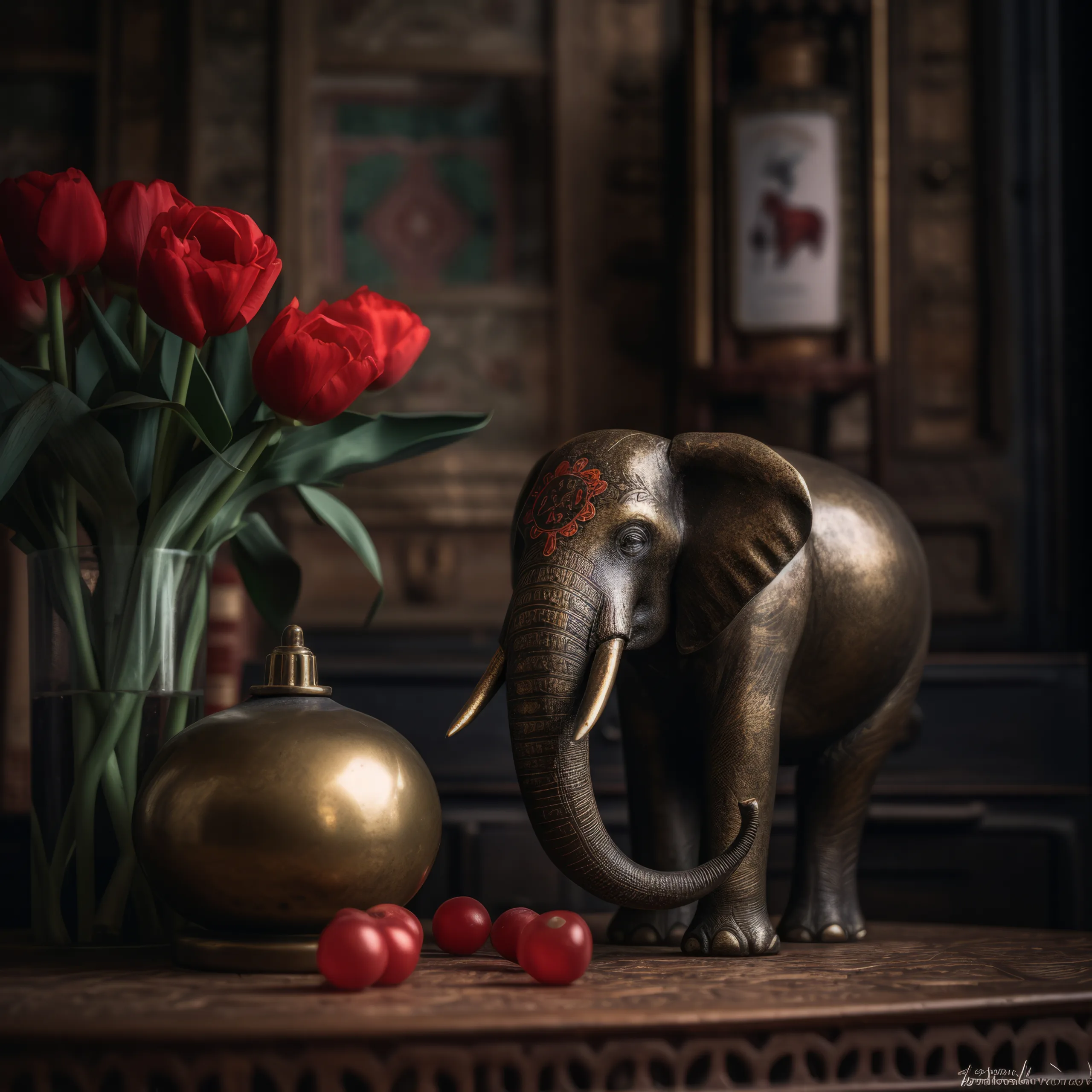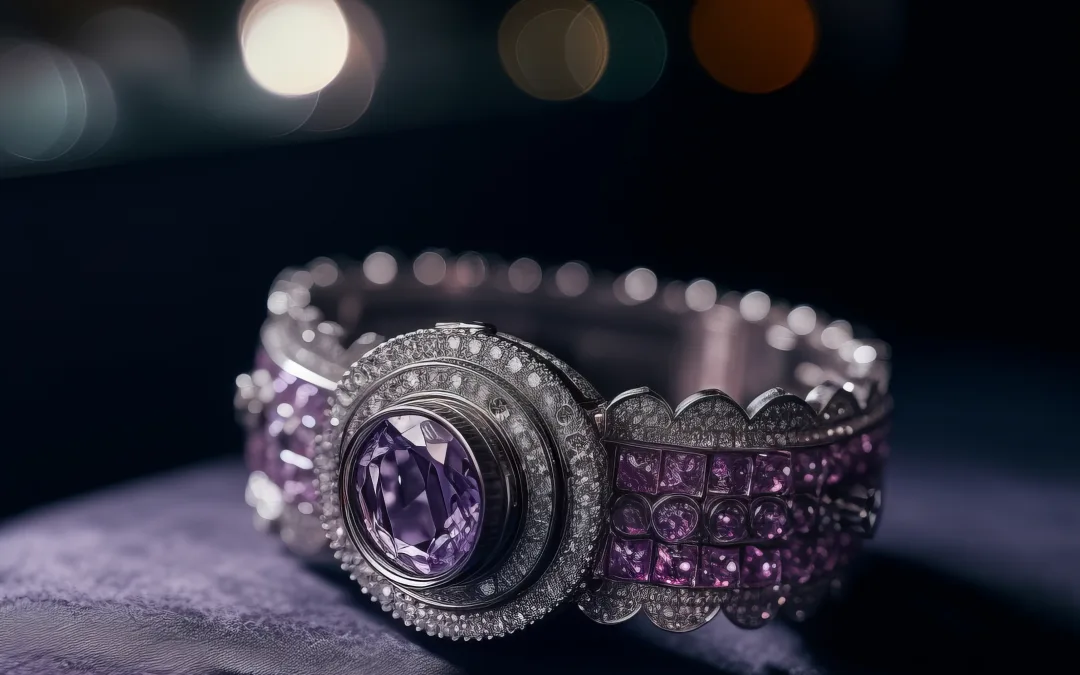Ok lets get into the, How to take great Product photos
Product photography is an essential part of any business that sells products online. High-quality product photographs are critical for businesses as they help customers make informed purchase decisions by providing a clear visual representation of the product. In fact, high-quality product photos can increase sales and conversions by up to 30%. With the rise of e-commerce and online shopping, product photography has become more critical than ever before.
The purpose of product photography is to showcase new products through high-quality images that highlight their features and benefits. Product photographs are used in various marketing materials such as websites, social media posts, advertisements, and product descriptions. These images need to be visually appealing while accurately representing the product.
In 2023, we can expect new technologies such as AI and machine learning to play a significant role in improving the quality and efficiency of product photo shoots. These technologies will enable photographers to capture better images by automating certain aspects of the process such as lighting adjustments or background removals.
Product photography is a job that requires skill and creativity. A good photographer must have knowledge about different types of cameras, lighting techniques, composition rules like rule-of-thirds, color theory, editing software like Adobe Photoshop or Lightroom. They should also have excellent communication skills since they work with clients who may have specific requirements for their products.
It is no surprise that the demand for product photography has increased significantly over the years due to the growth of e-commerce businesses worldwide. As businesses continue to launch new products regularly, there is always a need for high-quality photographs that represent these new products accurately.
Investing in high-quality product photos should be a top priority for any business’s next project because it can significantly impact sales and conversions positively. Product photography is profitable because it attracts potential customers by showcasing your products’ best features through eye-catching images.
The Beginner’s Guide to Product Photography: Tools and Tips for Getting Started
Essential Tools for Beginners in Product Photography
Starting a product photography business can be challenging, especially if you don’t have the right equipment. To get started, you’ll need a camera, tripod, lighting equipment, and a backdrop. These tools will help you capture high-quality images that showcase your products effectively.
The camera is the most important tool in product photography. You can use any type of camera as long as it has manual controls and shoots in RAW format. A tripod is also essential to keep your camera steady and prevent blurry images. Lighting equipment is necessary to control the light source and create shadows that add depth to your photos. A backdrop provides a clean background for your products and eliminates distractions.
DIY Product Photography
If you’re on a tight budget, DIY product photography can be done using a foam board as a backdrop and natural light as the source of illumination. Foam boards are inexpensive and easy to find at craft stores or online retailers like Amazon. Natural light is free and readily available but requires some planning to achieve consistent results.
To create DIY product photography with foam board, place the board on a flat surface near a window with indirect sunlight. Position your products on top of the board and adjust their placement until you’re satisfied with how they look in the viewfinder. Use reflectors or whiteboards to bounce light onto your products from different angles.
Clothing Products
Clothing products require careful attention to detail make sure it’s ironed or steamed beforehand to eliminate wrinkles or creases that may detract from its appearance.
Position clothing items so that they hang naturally without any distortions or bulges in the fabric. Use clips or pins to hold them in place if necessary but be careful not to damage delicate materials like silk or lace.
Amazon Product Photography
When selling products on Amazon, adhering to marketplace guidelines is crucial to ensure your images are accepted and displayed correctly. Amazon’s product photography guidelines include image size and resolution, background color, and file format.
Images must be at least 1000 pixels on the longest side and have a resolution of 72 DPI. The background should be pure white with no shadows or reflections. File formats accepted by Amazon include JPEG, TIFF, PNG, and GIF.
Google Shopping
Google Shopping requires high-quality images that accurately represent the product and comply with their policies to improve visibility and increase sales. Google’s image requirements include a minimum size of 100 x 100 pixels, no watermarks or promotional text, and a white or light-colored background.
To optimize your Google Shopping images for better visibility, use high-resolution photos that show multiple angles of your products. Include detailed descriptions that highlight the features and benefits of each item.
Must-Follow Techniques for Crafting a Perfect Setup for Product Photography
Choose the Right Background for Your Product to Make it Stand Out in the Photo
The background you choose for your product photography can make a huge difference in how your product is perceived by potential customers. The right background can help your product stand out, while the wrong one can detract from its beauty and features.
When choosing a background, consider the color and texture of your product. If your product is dark or has a lot of texture, a white or light-colored background may be best to provide contrast. On the other hand, if your product is light-colored or has a smooth surface, a darker or more textured background may be appropriate.
You can also experiment with different types of backgrounds such as paper rolls, fabric backdrops, or even natural settings like wood grain or foliage. Just remember that the focus should always be on the product itself.
Use Natural Lighting or Invest in a Good Lighting Setup to Ensure High-Quality Photos
Lighting plays an important role in creating high-quality photos that showcase your products in their best light. While natural lighting can work well for some products, investing in a good lighting setup can make all the difference.
One option is to use softbox lights which provide even illumination without harsh shadows. Another option is to use LED lights which are energy-efficient and long-lasting. Whatever setup you choose, make sure that it provides enough light without being too bright or overwhelming.
Clean and Prepare Your Product Before Shooting to Avoid Any Unwanted Reflections or Blemishes
Before taking any photos of your products, it’s important to clean and prepare them properly. This includes removing any dust and fingerprints as well as checking for any blemishes that could show up in the photos.
To avoid unwanted reflections, use a polarizing filter on your camera lens which will reduce glare from shiny surfaces like glass or metal. You could also try using diffusers which soften harsh lighting and create more subtle shadows.
Experiment with Different Angles and Compositions to Find the Best Way to Showcase Your Product
To create visually interesting product photos, it’s important to experiment with different angles and compositions. Try shooting from above, below, or at eye level to see which angle works best for your product.
You can also play around with different compositions such as using negative space or creating a pattern with multiple products. Don’t be afraid to get creative and think outside the box.
Invest in a Sturdy Tripod and Use It to Keep Your Camera Steady and Avoid Blurry Photos
A sturdy tripod is essential for keeping your camera steady during product photography sessions. This will help you avoid blurry photos caused by shaky hands or unstable surfaces.
When choosing a tripod, look for one that is lightweight yet sturdy enough to support your camera. Make sure it has adjustable legs so that you can position it at the perfect height and angle for each shot.
Choosing the Right Camera and Lenses for Product Photography
Quality product photography is essential for businesses that want to showcase their products in the best possible way. To achieve this, investing in a good camera and lenses is crucial. There are many options on the market, but it’s important to choose equipment that can capture high-resolution images and meet your specific needs at a reasonable price.
When selecting a camera for product photography, consider one with a high megapixel count, as this will allow you to capture more detail in your photographs. Look for cameras with manual controls so you can adjust settings like aperture and shutter speed to suit your shooting environment. Canon EOS R5 is an excellent choice of camera for product photography because of its 45-megapixel resolution and ability to shoot up to 20 frames per second.
In terms of lenses, there are several options available depending on what you need to photograph. For standard product shots, a prime lens with a focal length between 50mm-85mm is ideal because it produces sharp images with minimal distortion. A macro lens is necessary if you need to capture intricate details like textures or small objects. The Canon EF 100mm f/2.8L Macro IS USM Lens is one of the best lenses for product photography because it has excellent image stabilization and produces stunningly sharp images.
When photographing reflective products like glass or jewelry, choosing the right camera settings is essential to avoid unwanted reflections in your photos. Use a polarizing filter on your lens to reduce glare from shiny surfaces and set your shutter speed appropriately (usually between 1/125th-1/250th) so that the camera captures enough light without overexposing the image.
While Adobe Lightroom can enhance the quality of product images through editing features like color correction and exposure adjustments, it cannot compensate for poor camera and lens choices. Therefore, investing in quality equipment should be a priority for any photography company that wants to produce professional-grade product photos for clients.
Tips for Lighting Your Products: Natural Light vs Artificial Light
Natural Light vs Artificial Light: Which One is Better for Your Product Photography?
Natural light and artificial light are two of the most common lighting sources used in product photography. While natural light can provide a soft and diffused illumination that enhances the details and texture of your products, artificial light can give you more control over the lighting setup. In this section, we’ll explore the pros and cons of each type of lighting source to help you determine which one is best for your product photography needs.
Natural Light: The Pros
One of the biggest advantages of using natural light for your product photography is that it’s free! All you need is a window or an open space where you can take advantage of the available sunlight. Another benefit of natural light is that it provides a soft and diffused illumination that can highlight the details and texture of your products without creating harsh shadows or highlights.
If you’re shooting outdoors, natural light can also provide a beautiful backdrop for your products. For example, if you’re photographing jewelry or other small items, you could place them on a rock or a piece of driftwood to create an interesting composition.
Natural Light: The Cons
While natural light can be great for product photography, there are some downsides to consider as well. One major drawback is that it’s not always available when you need it. If you’re working indoors or during cloudy weather conditions, natural light may not be strong enough to provide adequate illumination for your products.
Another issue with natural light is that it can change throughout the day as the sun moves across the sky. This means that if you’re shooting in different locations at different times, your lighting conditions will vary significantly.
Artificial Light: The Pros
Artificial light sources such as studio lights or LED panels offer several benefits for product photography. First off, they allow you to have complete control over your lighting setup so that you can achieve consistent results every time. You can adjust the intensity and direction of your lights to create the exact look you want for your products.
Another advantage of artificial light is that it’s available whenever you need it. Whether you’re working indoors or outdoors, day or night, you can set up your lighting equipment and start shooting.
Artificial Light: The Cons
While artificial light offers a lot of benefits for product photography, there are some downsides to consider as well. One major drawback is that it can be expensive to invest in high-quality lighting equipment. You may also need to learn how to use the equipment properly so that you can achieve the desired results.
Another issue with artificial light is that it can create harsh shadows and highlights if not used correctly. To avoid this problem, it’s important to choose the right type of light source and light setup for your products.
Using Sweep or Portrait Mode to Emphasize the Product with Real-World Background
Sweep or Portrait Mode to Emphasize the Product with Real-World Background
Sweep or portrait mode can be a powerful tool in product photography. By blurring out the real-world background, these modes help emphasize the product and make it stand out. This is especially useful for e-commerce websites where customers only have pictures to rely on when making purchasing decisions.
Lifestyle shots are an excellent way to showcase products in a real-world setting. These images give customers a preview of how the product might look in their own life and can help them visualize how it would fit into their daily routine. Using sweep or portrait mode to blur out the background in these images helps draw attention to the product itself, highlighting its unique features and benefits.
High-quality imagery is crucial for making a product look its best and increasing sales. Using professional-grade cameras and lenses can make all the difference but it can pay off in increased sales over time.
Detail shots are another essential element of effective product photography. These images highlight specific features of the product, such as texture or design, giving customers a closer look at what they’re buying. Using sweep or portrait mode for detail shots can help focus attention on these key features, creating visually appealing images that capture customers’ interest.
Shadows can add depth and dimension to pictures, making them more visually appealing. When used correctly, shadows can create an artful effect that draws attention to the product while also adding visual interest to the image as a whole. Experimenting with different angles and lighting setups can help you achieve this effect and create eye-catching images that stand out from competitors.
Using different ways to focus on the product is crucial for creating artful and eye-catching images that stand out from competitors’. Changing up angles or lighting setups can create unique visual effects that highlight the product’s best features. For example, using a low angle to shoot an image can make the product appear more significant and more imposing, while using a high angle can create a sense of depth and dimension.
Color Theory in Product Photography: Using Natural Tones for Better Results
Colors play a crucial role in product photography, as they can evoke emotions and influence purchasing decisions. Using natural tones in product photography can result in higher quality imagery that looks more authentic and appealing to customers.
Achieving a pure white background is important when shooting on a white background. This will avoid distracting shadows or color casts. One way to achieve this is by using a lightbox or tent that diffuses the light evenly across the product, resulting in a clean and professional look.
Experimenting with different types of lighting and backgrounds can give you an idea of what works best for your product and brand. For example, if you’re selling organic skincare products, using a natural wood or stone background may be more appropriate than a bright, bold color. On the other hand, if you’re selling vibrant clothing items, using a colorful backdrop may help make your products stand out.
Using a black foam board as a backdrop can create a dramatic effect and add depth to your product photos. This technique is especially useful for jewelry or small accessories where you want to showcase every detail of the item. The black background helps highlight the colors and textures of the product while also creating contrast.
Editing Your Product Photos: Basic Photo Editing Class and Shooting for the Edit
Basic Photo Editing: Enhancing the Quality of Your Product Shots
Editing your product photos is an essential step in achieving great shots that stand out from the competition. Basic photo editing can help you enhance the quality of your images, making them look more professional and polished. Whether you’re a beginner or an experienced photographer, here are some tips to help you get started with editing your product photos:
Adjust brightness and contrast: One of the most basic adjustments you can make is to adjust the brightness and contrast of your image. This will help bring out details in your product and make it look more vibrant.
Crop and straighten: Cropping your image can help you remove any distracting elements and focus on the main subject. Straightening your image can also help improve its overall composition.
Remove blemishes: If there are any blemishes or imperfections on your product, such as scratches or dust, you can use a cloning tool to remove them.
Adjust color balance: Adjusting the color balance of your image can help correct any color casts and ensure that colors look accurate.
Shooting for the Edit: Taking Shots with the Final Edit in Mind
Shooting for the edit means taking shots with the final edit in mind. This approach involves planning ahead so that you capture images that will be easier to edit later on. By doing this, you can save time during post-processing and achieve better results overall.
Here are some tips for shooting for the edit:
Use a first-class studio setup: A high-quality studio setup is essential for capturing great product shots. Make sure you have proper lighting equipment, backdrops, and props if necessary.
Shoot from multiple angles: Shooting from different angles will give you more options when it comes time to choose which images to use.
Take multiple shots of each angle: Taking multiple shots of each angle will give you more options when it comes time to choose which images to use.
Use a tripod: Using a tripod will help you keep your shots consistent and reduce the risk of camera shake.
PMP and Nicky: Popular Photo Editing Software for Product Photography
There are many different photo editing software options available, but two popular choices for product photography are PMP and Nicky. Both of these programs offer a range of features that can help you achieve professional-looking product photos.
Here are some features of each program:
PMP: PMP is a powerful photo editor that offers advanced features such as layers, masks, and filters. This program is great for more complex editing tasks.
Nicky: Nicky is a user-friendly photo editor that offers basic editing tools such as cropping, resizing, and color adjustments. This program is great for beginners or those who need to edit photos quickly.
Sharing Your Work: Importance of Building a Portfolio and Showcasing Your Work as a Beginner or Professional Photographer
Building a Portfolio: Showcasing Your Work as a Photographer
Professional photos are an essential component of any photographer’s portfolio. Whether you’re just starting or have been in the industry for years, having a well-curated collection of your work is crucial to gaining exposure and attracting potential clients. In this section, we’ll discuss the importance of building a portfolio and showcasing your work as a beginner or professional photographer.
Social Media Platforms: Share Your Work with Many People
Social media platforms provide an excellent opportunity for photographers to share their work with a large number of people. Instagram, Facebook, and Twitter are all great places to showcase your photos and attract potential clients. Be sure to use relevant hashtags and engage with your followers by responding to comments and messages promptly. By doing so, you can build relationships with potential clients and collaborators.
Communication: Conveying Your Style and Vision
When sharing your work, it’s essential to communicate effectively with potential clients. This allows you to convey your style and vision while also understanding their needs. Good communication skills can help build trust between you and prospective customers, leading to long-term business relationships.
Small Business Owners: Attract More Customers
A well-curated portfolio can help small business owners showcase their products in a professional manner, attracting more customers and boosting sales. For example, if you specialize in product photography, having high-quality images of products on your website or social media pages will make them more attractive to potential buyers.

Anyone Can Benefit from Showcasing Their Work
Whether you’re just starting out or have years of experience under your belt, anyone can benefit from showcasing their work online. Even if you only have a couple of strong pieces in your portfolio, they can still make a big impact on potential clients.
Mastering the Art of Product Photography with Must-Follow Tips and Techniques
To become a successful product photographer, you need to have an eye for detail and creativity. It is not just about taking pictures of products; it is about capturing their essence and making them look appealing to potential customers. In this blog post, we have shared some must-follow tips and techniques that will help you master the art of product photography.
Firstly, having the right tools is crucial in product photography. This includes a good camera and lenses that can capture high-quality images. You should also invest in lighting equipment such as softboxes or umbrellas to create the perfect lighting setup for your shots.
Crafting a perfect setup for product photography involves paying attention to every detail. You need to consider the background, props, and angles to highlight the features of your products effectively. Using sweep or portrait mode can help emphasize your products against real-world backgrounds.
Lighting plays a significant role in product photography. You can choose between natural light or artificial light depending on what suits your products best. Using natural tones in color theory can give better results by creating a sense of harmony in your photos.
Editing your product photos is equally important as shooting them correctly. Basic photo editing classes are available online, which can teach you how to enhance the colors and adjust brightness levels effectively. Shooting for edit means keeping editing in mind while taking pictures so that they require minimal editing later on.
Finally, sharing your work is essential for building a portfolio as a beginner or professional photographer. Showcasing your work through social media platforms like Instagram or Pinterest can attract potential clients who might be interested in buying your services.


